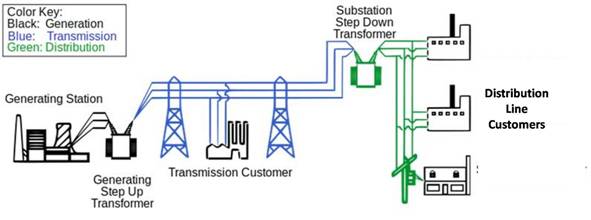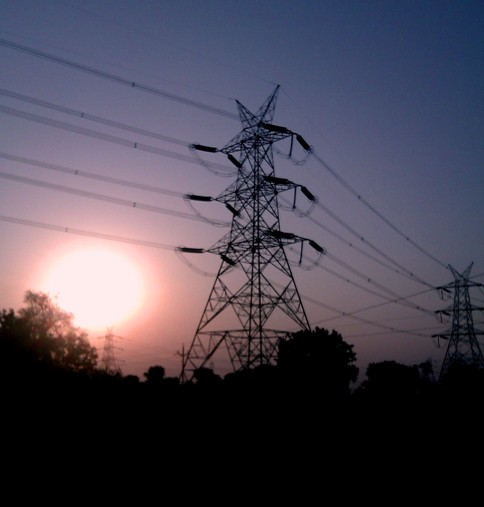Power Grid System in India – Part 1
The power or electricity grid is an interconnected network for delivering electricity from electricity generators to consumers. A power grid system includes a number of electricity generating stations, high-voltage transmission lines for carrying electricity, and distribution lines that connect end customers. The electricity generated from the power station such as thermal power plants, hydropower plants, etc. is stepped up using a step-up transformer to make it feasible for long-distance transmission. The transmission network carries electricity to the substation. The substation is the place where electricity is stepped down from a transmission level voltage to a distribution level voltage. From the substation, low voltage electricity can be distributed to the customer using distribution lines.

Indian Power Grid
For better management of the power grid system, India is geographically divided into five regions namely, Northern, Eastern, Western North Eastern, and Southern grids. Since August 2006, the Indian electricity system is divided into two grids, the Integrated Northern, Eastern, Western, and North-Eastern regional grids (NEWNE) and the Southern Grid. All the states and union territories in India fall in either of these regions. The first four (NEWNE) out of five regional grids are operating in a synchronous mode, which implies that the power across these regions can flow seamlessly as per the relative load generation balance hence these four regional grids have been integrated together into NEWNE.
The Southern Region is interconnected with the rest of the India grid through asynchronous links. This implies that quantum and direction of power flow between the Southern Grid and the rest of the India grid need to be manually controlled. The Southern grid has also been planned to be synchronously operated with the rest of all India Grid by early 12th Plan (2012-2017). Presently Southern grid is connected with the Western and Eastern grid through HVDC link and HVDC back to back systems.
Various states covered under various regional grids is given the table below;
|
NEWNE Grid |
Southern Grid |
|||
|
Northern |
Eastern |
Western |
North-Eastern |
Southern |
|
Chandigarh |
Bihar |
Chhattisgarh |
Arunachal Pradesh |
Andhra Pradesh |
|
Delhi |
Jharkhand |
Gujarat |
Assam |
Karnataka |
|
Haryana |
Orissa |
Daman & Diu |
Manipur |
Kerala |
|
Himachal Pradesh |
West Bengal |
Dadar & Nagar Haveli |
Meghalaya |
Tamil Nadu |
|
Jammu & Kashmir |
Sikkim |
Madhya Pradesh |
Mizoram |
Pondicherry |
|
Punjab |
Andaman & Nicobar |
Maharashtra |
Nagaland |
Lakshadweep |
|
Rajasthan |
Goa |
Tripura |
||
|
Uttar Pradesh |
||||
|
Uttarakhand |
||||



Are Andaman & Niicobar and Lakshadweep connected to the National Grid?